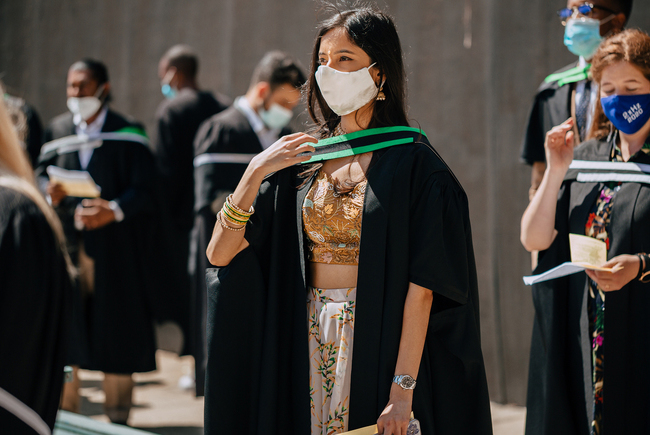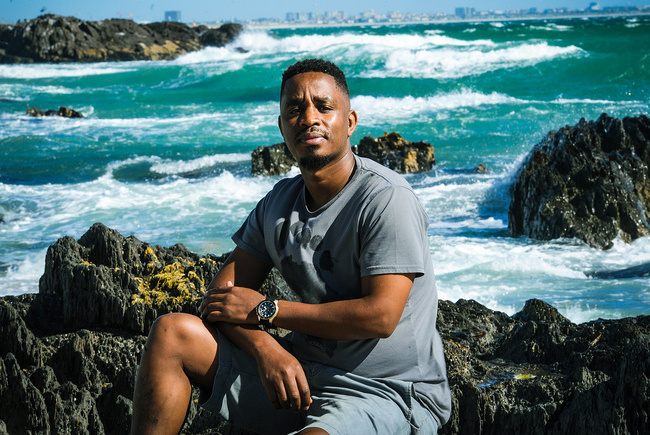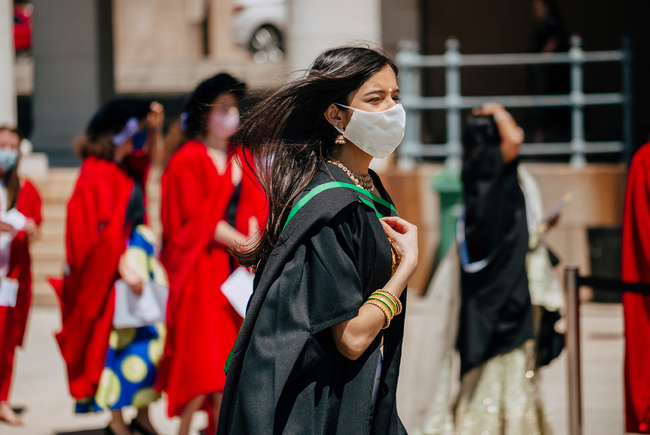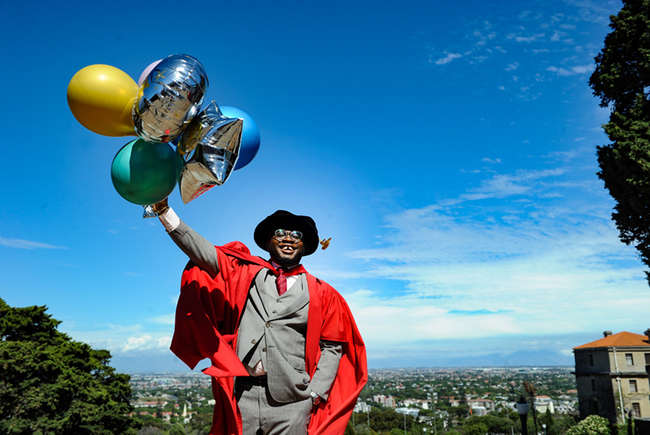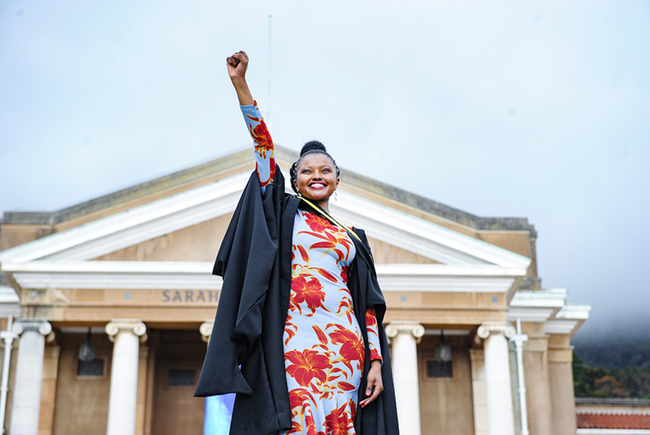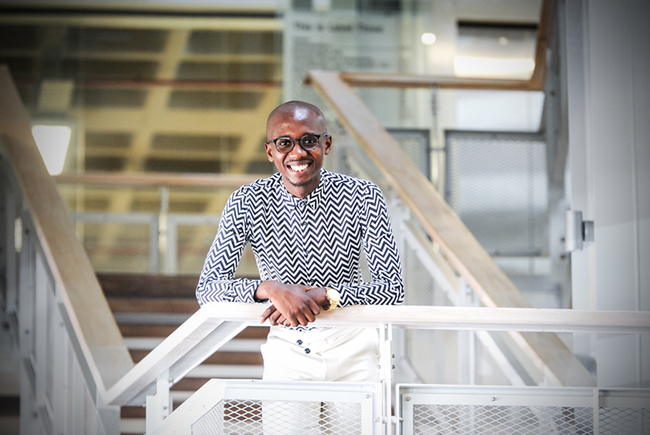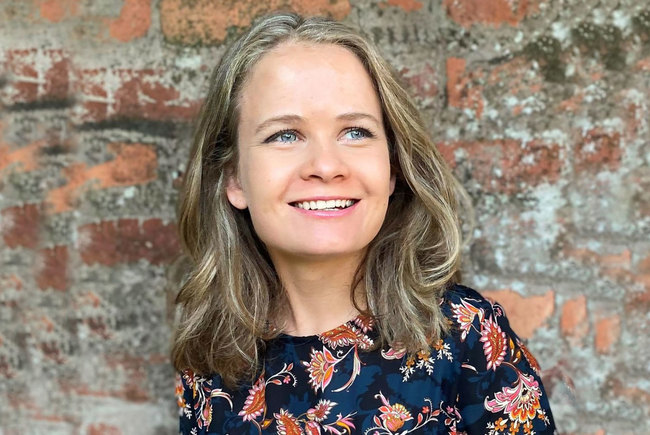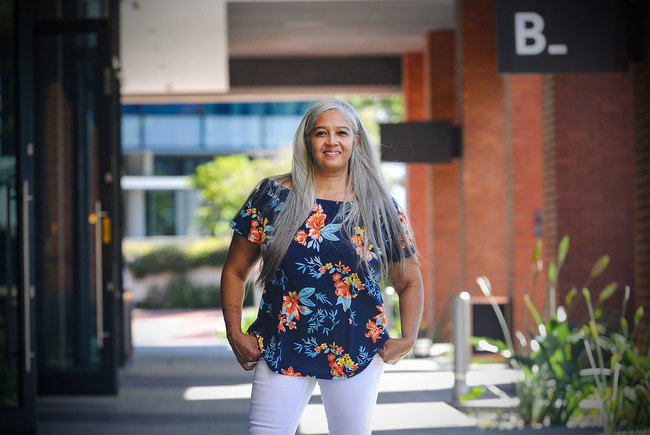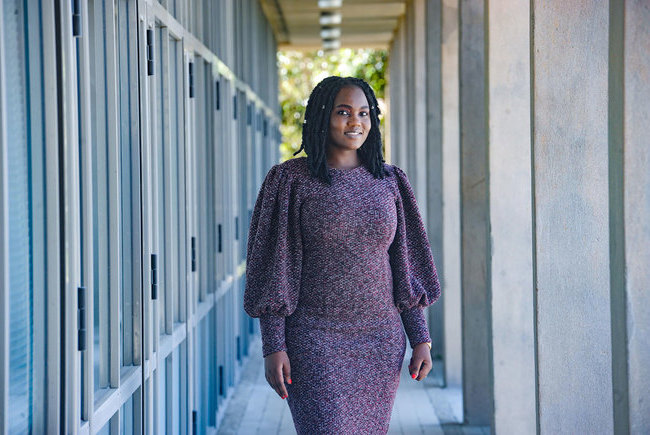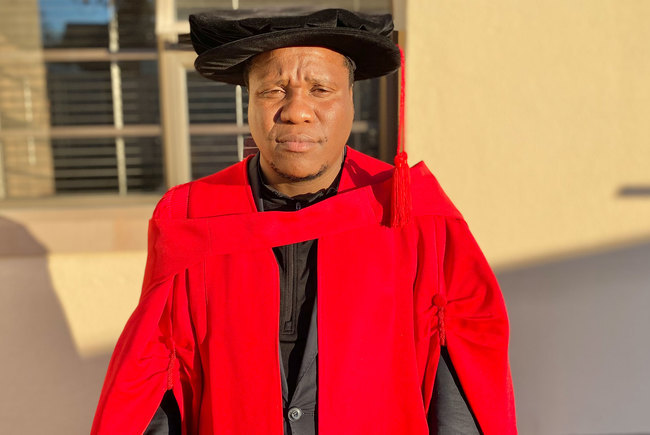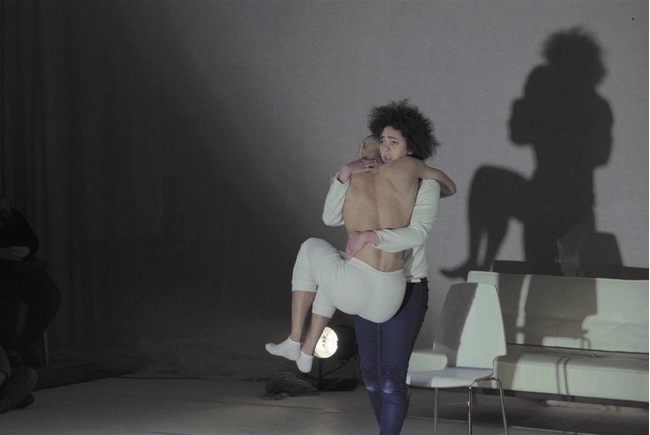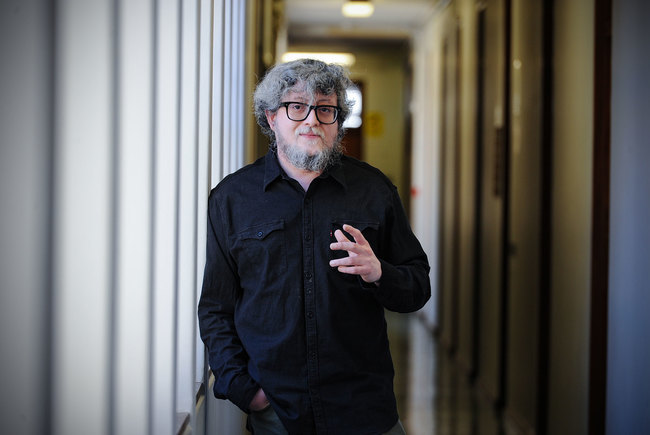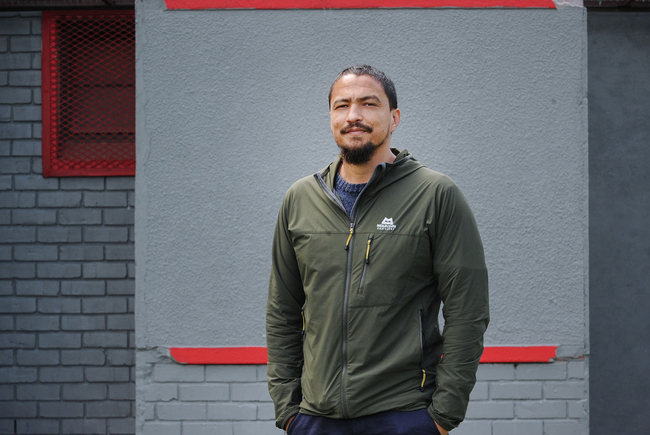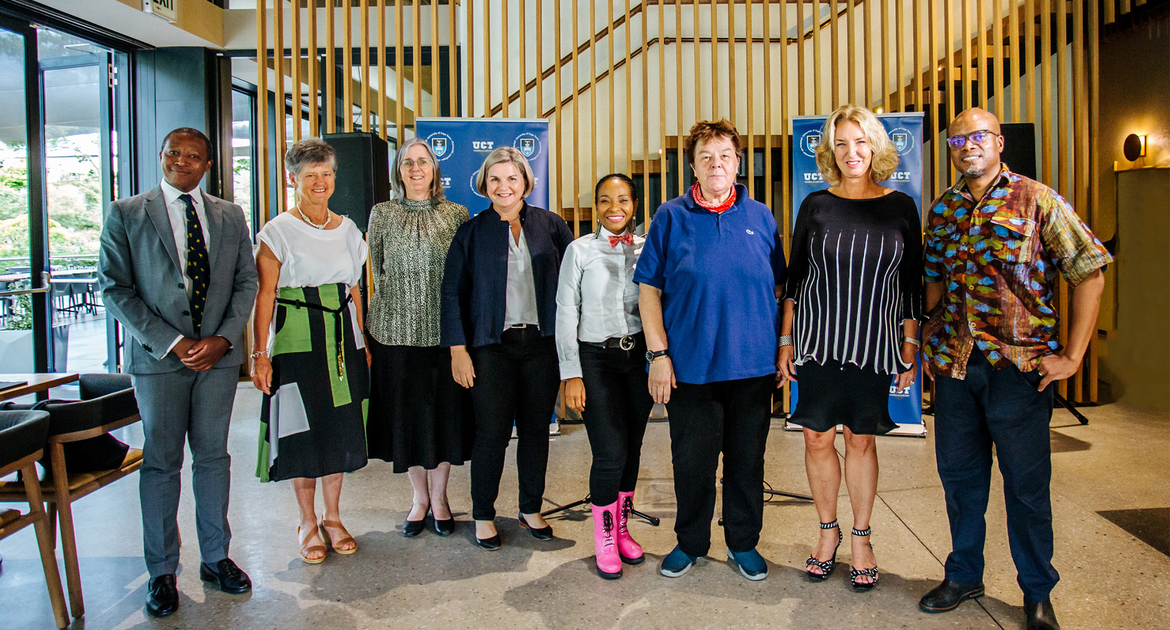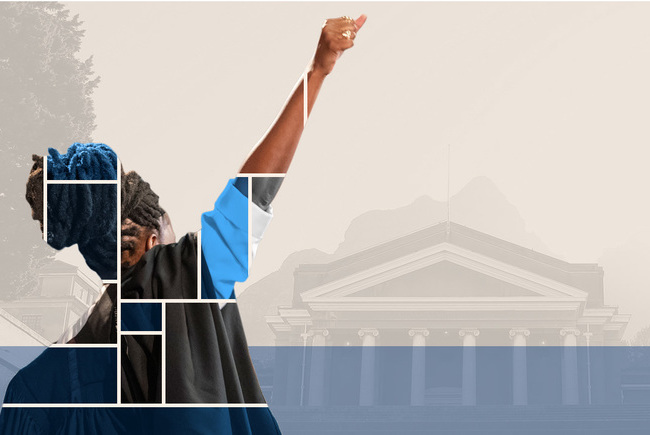The stronger we become: ‘creating an immersive, contemplative space’
19 February 2021 | Story Helen Swingler. Photo Supplied. Read time 7 min.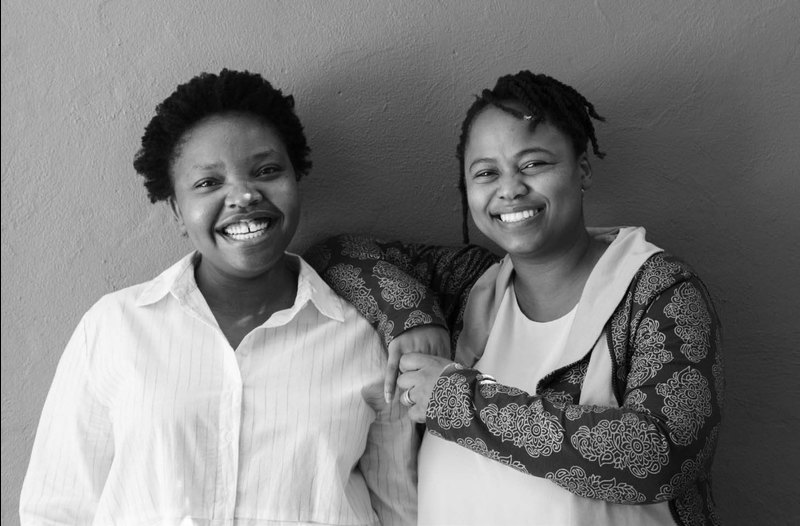
Four University of Cape Town (UCT) academics were awarded two UCT Creative Works Awards for 2020: Nkule Mabaso and Associate Professor Nomusa Makhubu for their exhibition The stronger we become. Associate Professor Nadia Davids and Professor Jay Pather were honoured for their production What Remains.
This is Mabaso and Associate Professor Makhubu’s first Creative Works Award, which recognises major art works, performances, productions, compositions and architectural designs produced by UCT staff. Mabaso is the curator of the Michaelis Galleries and Makhubu is a scholar of art history and visual culture, both in the Faculty of Humanities. The work encompasses painting, film, sketches, narrative and an accompanying book. They spoke with UCT News.
Helen Swingler (HS): What does this accolade mean to you and for your work and academic role?
Nkule Mabaso, Nomusa Makhubu (Mabaso, Makhubu): It is an honour to be recognised for this work, particularly because it stems from our joint efforts towards centring black women art historians/scholars within the discourse of art history in South Africa and in the continent at large. Moreover, the publication forms part of our co-curation for the South African Pavilion at the Venice Biennale 2019.
HS: The work is described as a trialogue – a collaboration with three artists and various curators. How was the material presented together (film, paintings, sketch and narrations) and how did the book complement this?
Mabaso, Makhubu: The stronger we become is designed as an immersive contemplative space. It invites the viewer to a trialogue between Tracey Rose’s film Hard Black on Cotton (2019), Mawande Ka Zenzile’s paintings and Dineo Seshee Bopape’s Marapo a yona Dinaledi (Its bones the stars), Sketch no 22 (2019). As one walks in, Ka Zenzile’s Leave your Mind Outside (2018) sets the tone through the text “Come inside and remember to leave your shoes and your mind outside.” Across from his paintings is Rose’s film. In this film, set beneath a constellation of lights, Marapo a yona Dinaledi (Its bones the stars), Sketch no 22 probes the understanding of time or the colonisation of time (ie, histories as pasts manufactured in the present and as speculative).
“In their work we find dissenting voices that astutely and sensitively engage with colonial and apartheid displacement.”
This mixed-media installation is about spatio-temporality. It consists of mud bricks, mud cookies, grass, bronze branches and tiles. Using soil, sand and grass from the context where the installation is exhibited, Bopape’s work is cartographic, representative of many familiar places but referring to no specific one. Bopape, Rose and Ka Zenzile offer modes of encounter through which pluralities in knowledge systems and epistemic justice can unravel. In their work we find dissenting voices that astutely and sensitively engage with colonial and apartheid displacement.
The book begins with a playlist seeking to explore how the often “unspeakable” truths in the works of Bopape, Ka Zenzile and Rose can be expressed in song. We also present a glossary – not to explain the themes but to walk through life’s idiosyncrasies and reflect on oppressions across generations; understanding what dignity, resilience, self-determination and other themes evoke in relation to the artworks. The five contributors, Gabi Ngcobo, Portia Malatjie, Nontobeko Ntombela, Same Mdluli and Aïcha Diallo, reflect on each artist’s work and the exhibition as a whole.
HS: The transformation theme is very strong and deals with pressing issues: land, displacement and mobility and dignity. What has been the most fulfilling aspect of curating an exhibition with these themes?
Mabaso, Makhubu: Most fulfilling is to be able to see how new understandings of the kinds of problems that plague South Africa can emanate from the works in relation to each other. The themes themselves are not comforting nor fulfilling, necessarily so. They point to generational strife. So, it is through humanising moments that we can find dignity.
HS: With many individuals involved, what were the biggest challenges in designing and managing the exhibition and producing a publication?
Mabaso, Makhubu: A major challenge was receiving funds for the project a few weeks before opening. Apart from this, we enjoyed working with the artists and the contributors for the publication.
HS: Have you collaborated with one another before?
Mabaso, Makhubu: Yes, we co-curated Fantastic (2016), an exhibition that seeks to re-ignite critical thought about the fantastic in contemporary art and visual culture. Drawing inspiration from writers such as Ben Okri, this exhibition brings together video art and photographs that engage with the fantastic. Fantastic includes international artists such as Jelili Atiku (Nigeria), Dineo Seshee Bopape (South Africa), Kudzanai Chiurai (Zimbabwe), Andrew Esiebo (Nigeria), Milumbe Haimbe (Zambia), Aïda Muluneh (Ethiopia), Terence Nance (USA), Tracey Rose (South Africa), Zina Saro-Wiwa (Nigeria) and Pamela Phatsimo Sunstrum (Botswana).
Another collaborative project was the exhibition and publication There Are Mechanisms In Place. The book follows Sunstrum’s solo exhibition of the same name presented at Michaelis Galleries from 23 August to 21 September 2018. The creative book, quite different from the usual catalogue, deliberately centres and collaborates with black women cultural producers, responding to her solo exhibition. The authors include Thulile Gamedze, Philiswa Lila, Amie Soudien, Toni Stuart, Makhosazana Xaba, Refilwe Nkomo and Bonolo Kavula.
The title – There Are Mechanisms In Place – refers to a speech that South Africa’s former Minister of Higher Education and Training gave in October 2015 in response to student protests. In it, he stated: “It is a challenge, but I wouldn’t call it a crisis. A crisis implies that the situation is so bad that there are no mechanisms to deal with it. There are mechanisms in place.”
From this speech, Sunstrum became interested in how this ominously delivered threat served to confirm that the historical mechanisms that were once in place to “deal with” student uprising are still, indeed, “in place” now. The hand-crafted creative book provides a full view of the artist’s approach, exploring their futurist and coded works on paper.
HS: There are so many vibrant young South African artists. Was the selection of the three artists and their work a difficult task?
Mabaso, Makhubu: We work intuitively, so this part we enjoy too!
HS: The work has a very evocative title. What was its genesis?
Mabaso, Makhubu: The title was inspired by the lyrics of the song “(Something inside) So strong” by British songwriter Labi Siffre.
 This work is licensed under a Creative Commons Attribution-NoDerivatives 4.0 International License.
This work is licensed under a Creative Commons Attribution-NoDerivatives 4.0 International License.
Please view the republishing articles page for more information.
Graduation December 2021
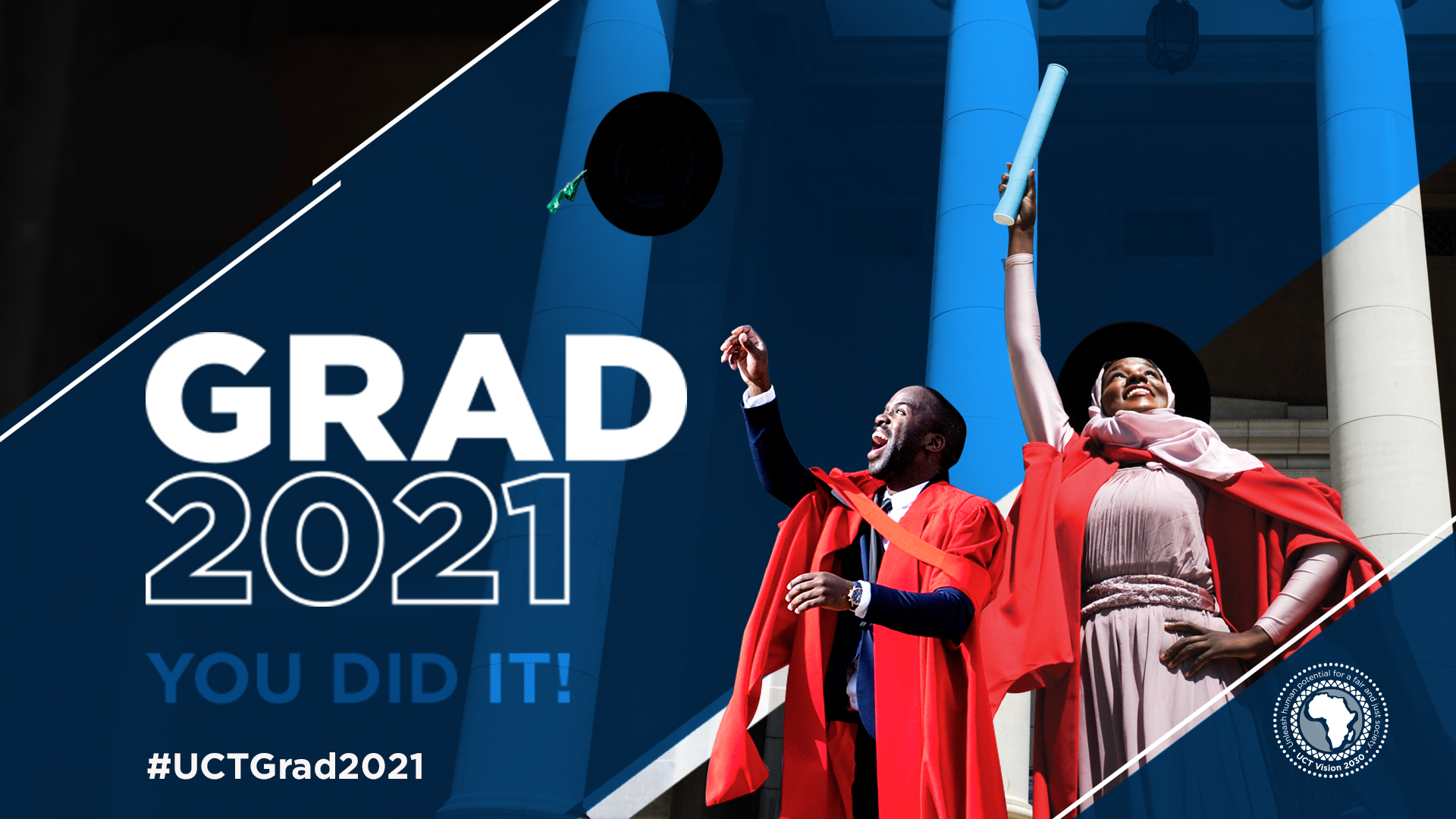
We understand the disappointment that our students and their families feel about the impact that the global pandemic has had on the normal operations for graduation ceremonies. Please know that the decision to host virtual graduation events was not taken lightly. We congratulate the December 2021 graduands on their academic success during exceptionally challenging times.
The December 2021 cohort graduated during the virtual celebratory events as per the published schedule available on the graduation page on the UCT Students website, where you will find full information about graduation.
You can also follow the celebrations on UCT’s Twitter page by using the #UCTGrad2021 hashtag.
Video and photo highlights
Ceremony videos
You did it!
The names of all of the December 2021 graduands (before the ceremony) and graduates (after the ceremony) can be found in the ceremony programme PDFs. Congratulations to all of you!
Our stories: inspirational graduates
The UCT News team has profiled a cross-section of inspirational graduands whose stories have inspired us. To all those we haven’t been able to feature, we’d like to say: each one of you is an inspiration – to your university, your families and your communities. We wish you every success in the future.
Creative works awards
UCT recognises and celebrates major creative works produced by members of staff at the university.
Distinguished Teacher Award
The Distinguished Teacher Award is the highest accolade awarded to teaching staff at all levels within the university. Through the award, the University of Cape Town acknowledges the primary place of teaching and learning in the university’s work.
Fellows of UCT
UCT’s Council established fellowships for members of permanent academic staff in recognition of original, distinguished academic work that merits special recognition. In 2021, nine new fellows have been recognised.
#UCTGrad2021 – social media elements
Customised Facebook frames and Instagram stickers are now available on our social media platforms. Watch the tutorial videos here to see how easily you can get your online presence ready to celebrate during the virtual events.








